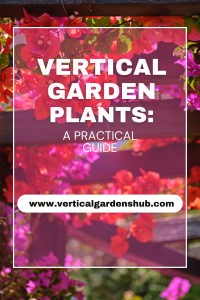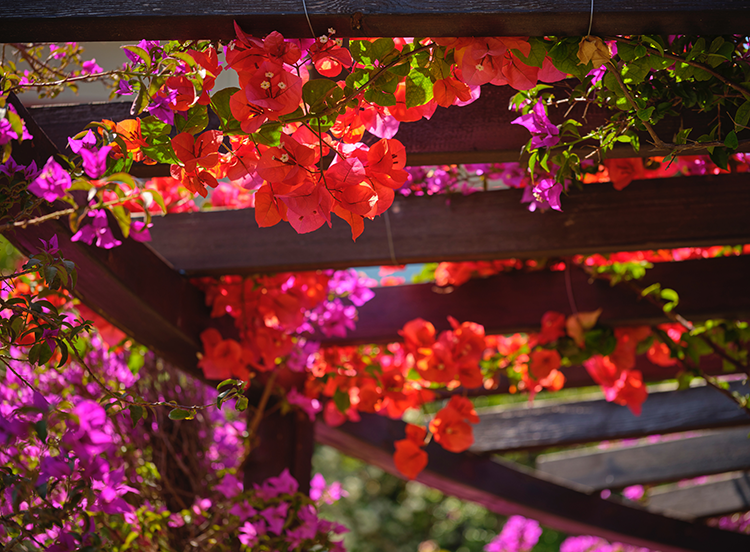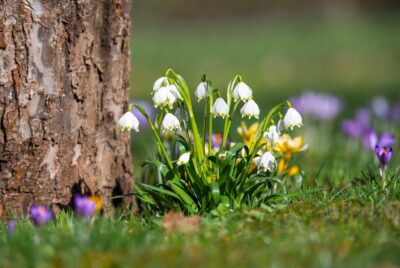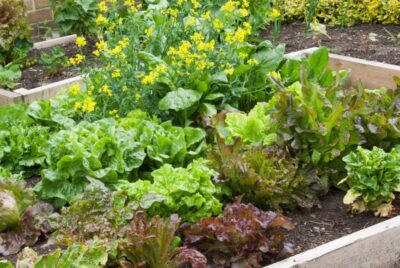Vertical Garden Plants: A Practical Guide
Vertical gardening is an excellent way to maximize your space and add a touch of greenery to any area, whether indoors or outdoors. By carefully choosing the right vertical garden plants, you can create a thriving vertical garden that not only beautifies your surroundings but also provides many benefits. Let’s explore vertical garden plants based on their sunlight requirements, maintenance needs, specific uses, and create a stunning vertical garden!
Contents Covered
- Sun-Loving Plants
- Shade-Tolerant Plants
- Edible Plants
- Flowering Plants
- Climbing Plants
- Low-Maintenance Plants
- Aromatic Plants
- Succulent Plants
- Herbs
Vertical Garden Plants
Sun-Loving
- Morning Glory: Known for its stunning blooms, Morning Glory is a vigorous climber that thrives in full sun. Its vibrant flowers add a pop of color and create a visually captivating display.
- Clematis: With a wide variety of colors and flower forms, Clematis vines are popular choices for vertical gardens. They prefer full sun and provide interest with their beautiful flowers.
- Bougainvillea: Bougainvillea is a sun-loving plant that adds a tropical touch to any garden. With its vibrant bracts, it creates a stunning vertical visual display.
- Black-eyed Susan: Black-eyed Susan is also a sun-loving perennial that produces bright yellow or orange flowers. It adds a cheerful touch and attracts pollinators.
- Trumpet Vine: Trumpet Vine is a fast-growing climber with trumpet-shaped flowers that attract hummingbirds. It thrives in full sun and adds a touch of natural beauty.
Shade-Tolerant Plants
- Ferns: Ferns are excellent choices for shady vertical gardens, adding a lush and textural element to the space.
- Hostas: Known for their beautiful foliage, Hostas thrive in shaded areas. They come in assorted colors and sizes, making them perfect for adding visual interest.
- Ivy: Ivy is a versatile plant that tolerates both sun and shade. Its trailing nature makes it a must have for vertical gardens in shady locations, adding elegance and greenery.
- Japanese Forest Grass: Japanese Forest Grass is a shade-loving grass that adds a graceful and soft texture. Its golden or variegated foliage creates a striking contrast.
- Coral Bells: Coral Bells, also known as Heuchera, thrive in shaded areas and offer a wide range of foliage colors. They add visual interest and attract hummingbirds with their delicate flowers.
Edible Plants
- Strawberries: Compact and prolific, strawberries are perfect for vertical gardens. Can be grown in hanging baskets or vertical planters, providing fresh and delicious fruits.
- Cherry Tomatoes: Cherry tomatoes are well-suited for vertical gardens, especially those with trellises or cages. They offer a bountiful harvest of sweet and juicy tomatoes.
- Lettuce: Lettuce is a cool-season vegetable. Its compact growth makes it suitable for small spaces.
- Swiss Chard: Swiss chard is a versatile leafy green that adds color and texture. Its vibrant stems and nutritious leaves make it a popular choice.
- Peppers: Peppers, both sweet and hot varieties, can grow vertically in containers or on trellises. They add spice and flavor to your vertical garden and are great for cooking.
Also Read:
Flowering Plants
- Petunias: Petunias are extremely popular flowering plants that come in an assortment of colors. They are perfect for vertical gardens, adding a burst of vibrant blooms and attracting pollinators.
- Nasturtiums: Nasturtiums are edible flowers that add a splash of color and a peppery flavor to salads. They are popular for gardens of all types, creating a cascading effect.
- Geraniums: Geraniums are classic flowering plants that thrive in vertical gardens. They offer a wide range of colors and add beauty to any space.
- Marigolds: Marigolds are hardy flowers that bloom abundantly. They attract beneficial insects and repel pests, making them a fantastic addition to any garden.
- Zinnias: Zinnias are an easy-to-grow annual flower that come in an assortment of colors and sizes. They add vibrant colors to vertical gardens and attract butterflies with their nectar-rich blooms.
Climbing Plants
- Hops: Hops are vigorous climbers that add height and texture to vertical gardens. They are ideal for trellises or structures, creating a visually appealing vertical display.
- Passionflower: Passionflower vines are known for their stunning flowers and intricate foliage. They add exotic beauty, attracting butterflies and hummingbirds.
- Jasmine: Jasmine is a fragrant climber that adds both beauty and fragrance to vertical gardens. Its delicate white flowers release a captivating scent in the evenings.
- Clematis: Clematis vines offer a wide variety of colors and flower forms, making them very versatile. They provide vertical interest and stunning blooms.
- Climbing Roses: Climbing roses are classic choices for vertical gardens, offering a romantic and timeless beauty. Their fragrant blooms and climbing create an enchanting atmosphere.
Low-Maintenance Plants
- Snake Plant: Snake plants are known for their hardiness and ability to tolerate low-light conditions. They require minimal watering and are perfect for indoor vertical spaces.
- ZZ Plant: ZZ plants are extremely low-maintenance and can tolerate low-light conditions. Their glossy foliage adds brightness to any garden.
- Pothos: Pothos is a trailing plant that thrives in various light conditions. It is easy to care for and is known for its cascading effect.
- Spider Plant: Spider plants are adaptable and low-maintenance plants that are perfect for vertical gardens. Their arching leaves and trailing habit create a visually appealing display.
- Aglaonema: Aglaonema, also known as Chinese Evergreen, is a low-maintenance plant with attractive foliage. It thrives in low to moderate light conditions, making it a suitable choice.
Aromatic Plants
- Lavender: Lavender is a fragrant herb that adds beauty and a soothing aroma. Its upright growth habit and delightful scent make it a popular choice.
- Mint: Mint is a versatile herb that grows vigorously and adds a refreshing fragrance. It is perfect for culinary purposes and creates a pleasant ambiance.
- Rosemary: Rosemary is a versatile herb that adds fragrance and flavor to vertical gardens. Its upright growth habit and woody stems make it an attractive choice.
- Lemon Balm: Lemon Balm is an herb with a pleasant lemon fragrance. It adds a refreshing aroma and can be used in teas or culinary dishes while cooking.
- Thyme: Thyme is a versatile herb with aromatic foliage. It adds a delightful scent and is excellent for culinary use.
Succulent Plants
- Sedum: Sedums are drought-tolerant succulent plants that come in a variety of shapes and colors. They are ideal for vertical gardens, as their fleshy leaves retain water, reducing watering needs.
- Hens and Chicks: Hens and Chicks (Sempervivum) are charming succulents that form rosette-shaped clusters. They are easy to grow and provide an interesting texture.
- Echeveria: Echeveria is a popular succulent with rosette-shaped leaves. It comes in assorted colors and adds a touch of elegance and femininity.
- Aloe Vera: Aloe Vera is a succulent plant known for its healing properties. It adds a sculptural element to vertical gardens and requires minimal care.
- String of Pearls: String of Pearls (Senecio rowleyanus) is a gorgeous succulent trailing with bead-like leaves. It adds a unique and eye-catching element to a wall garden.
Herbs
- Basil: Basil is a popular herb that thrives in vertical gardens. Its aromatic leaves are perfect for culinary use, and its compact growth makes it suitable for vertical planters.
- Parsley: Parsley is a versatile herb with curly or flat leaves. It adds freshness to dishes and creates a lush green backdrop.
- Cilantro: Cilantro, also known as coriander, is an herb with a distinctive flavor. It is excellent for culinary use and adds a vibrant touch.
- Dill: Dill is an aromatic herb with feathery foliage. It is commonly used in pickling and adds a unique flavor to dishes.
- Oregano: Oregano is a flavorful herb that is perfect for vertical gardens. Its aromatic leaves are used in various cuisines and attract beneficial insects.
Vertical Garden Plants Final Thoughts
With these best vertical garden plants and a vertical garden system, you have a diverse selection to choose from based on your preferences and the conditions of your vertical garden. Whether you opt for sun-loving plants like Morning Glory and Clematis, shade-tolerant plants like Ferns and Hostas, or edible plants like strawberries and cherry tomatoes, each plant will bring its unique beauty and benefits. Embrace your creativity, experiment with different combinations, and watch your vertical garden thrive with life and vibrancy!

FAQs:
Q: Can I grow vegetables in a vertical garden?
A: Absolutely! Vertical gardens are perfect for growing vegetables. Consider compact varieties or those that climb.
Q: Can I create a vertical garden indoors?
A: Yes, vertical gardens can be created indoors. Choose plants that thrive in low-light conditions. Use wall-mounted planters or hanging pots to create a vertical garden in your indoor spaces.
Q: Do vertical gardens require a lot of maintenance?
A: The maintenance level of vertical gardens depends on the specific plants chosen and the design of the garden. However, vertical gardens can be designed to require minimal maintenance by selecting low-maintenance plants and incorporating efficient watering systems.
Q: Can I mix different plant types in a vertical garden?
A: Certainly! Mixing different plant types adds visual interest and diversity to a vertical garden. Consider combining flowering plants, herbs, and trailing vines to create a dynamic and vibrant vertical garden.
Q: How often should I water plants in a vertical garden?
A: The watering frequency for vertical gardens depends on the specific plants and the environmental conditions. Monitor the moisture level of the soil and water accordingly. It is important to ensure adequate drainage to prevent waterlogging.





